USAID's Pioneering Role in Rwanda's Biodiversity Conservation
Since the late 1980s, USAID has played a pivotal role in transforming Rwanda’s landscape of conservation, turning regions like Nyungwe Forest into thriving national parks that not only preserve biodiversity but also fuel sustainable community development.
From Forest to Flourishing Park
It all began in 1988 with a grant to the Wildlife Conservation Society (WCS) for the "Nyungwe Forest Conservation Project," which led to the creation of trails and local guides training programs. These initial steps catalyzed a tourism spike, with Nyungwe Forest drawing nearly 3,000 visitors annually by 1990, mainly international travelers seeking its unique allure. USAID focused also on reducing the primary drivers of incursion into the Nyungwe National Park that result in deforestation, poaching, and other destructive activities. In 2010, USAID funded the construction of the Canopy Walkway with US $750,000, and launched tourist guides for trails and a certification program for guides. Thanks to these interventions, Nyungwe National Park was positioned as a unique rainforest destination, rather than solely a primate-viewing destination.
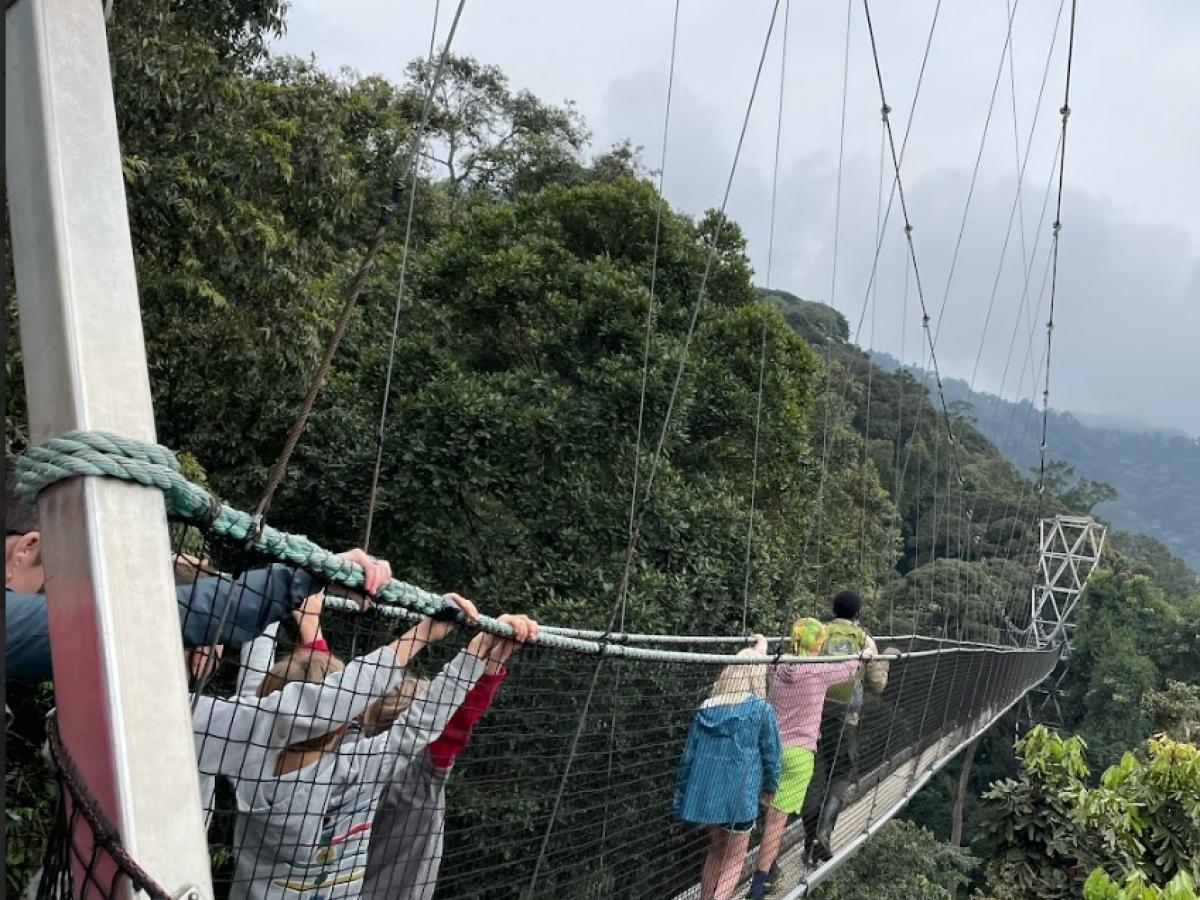
The Canopy Walkway was constructed in 2010 by Green Heart Conservation Company, Ltd. The walkway is made from aluminum and steel cables with expected durability of approximately 30 years. Its carrying capacity is four tons.
Molly Steinbauer for USAID.
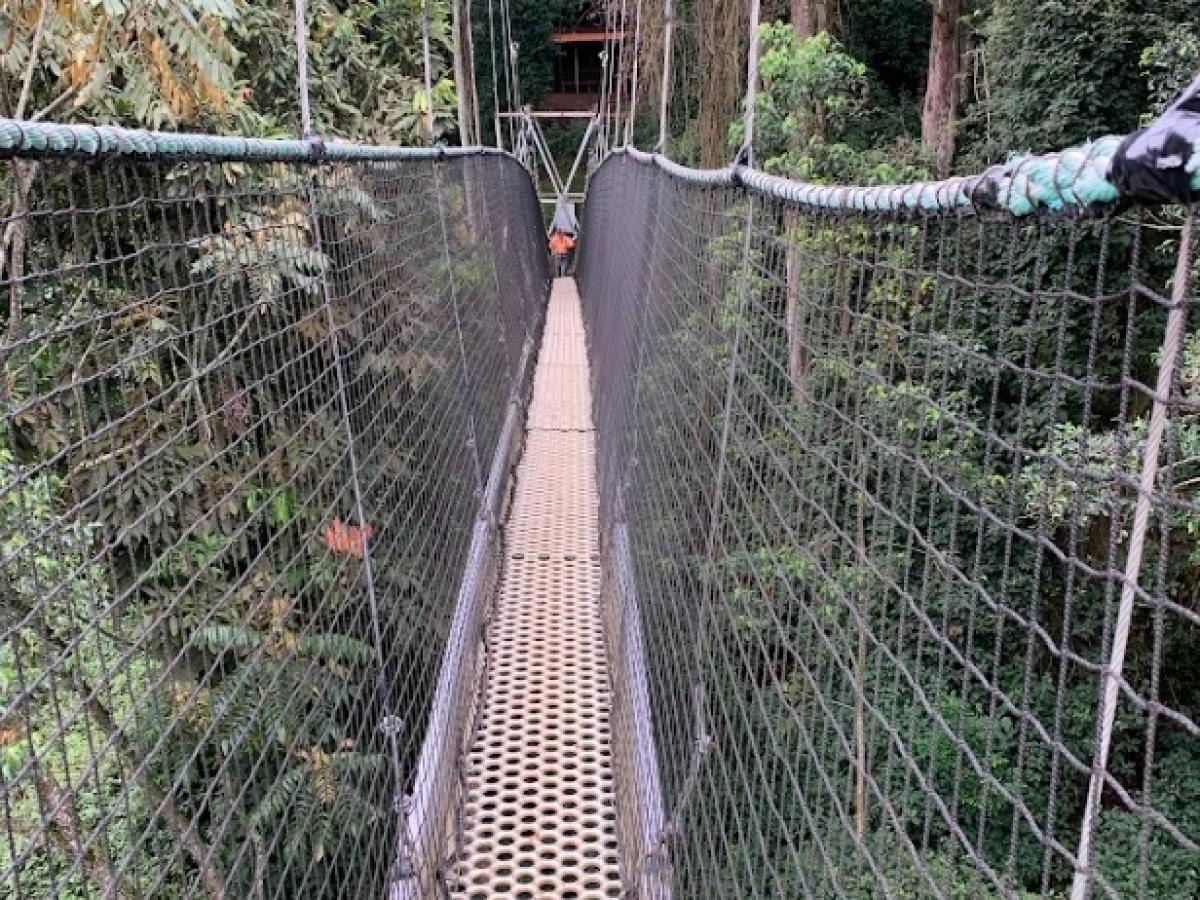
The first bridge is 45m, the main span is 90m, and the third section is 25m in length. The total length of the walkway is 160m. The first platform is 20m high and the second is 15m. The main bridge is 60m (around 200 ft) above the valley's floor.
Molly Steinbauer for USAID.
Institutional Transformation and Long-Term Conservation
In the early 2000s, USAID’s strategic funding helped restructure the Rwanda Office of Tourism and National Parks (ORTPN), enhancing the Rwandan government's capacity to manage and monetize park resources. This overhaul included the creation of new management roles within Nyungwe Forest, significantly boosting conservation efforts and community outreach. By 2005, Nyungwe was officially recognized as Rwanda’s third national park, thanks to USAID’s support in developing ORTPN’s inaugural five-year management plan, and laying a robust groundwork for future growth, especially in tourism.
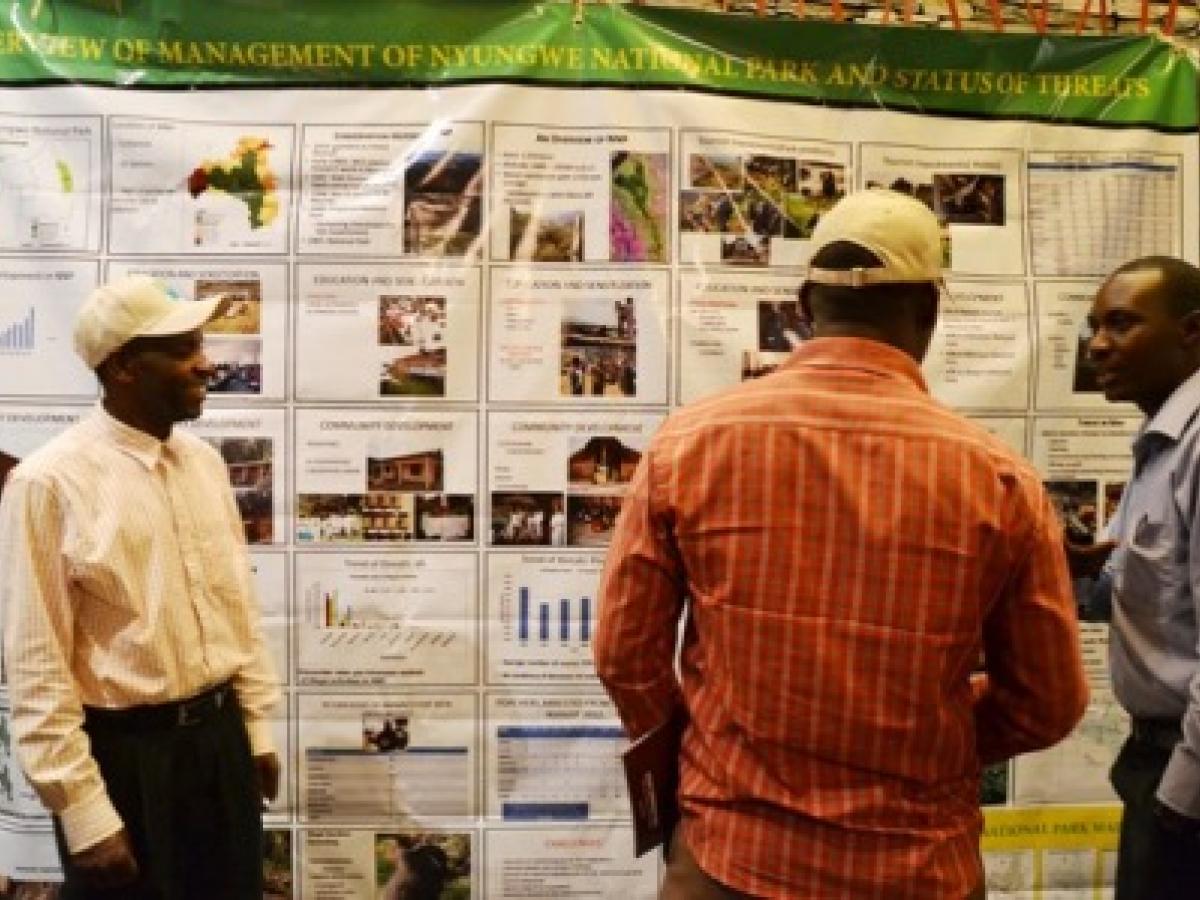
In 2016, USAID helped develop plans for trails and tourist guides.
Archives of USAID Rwanda.
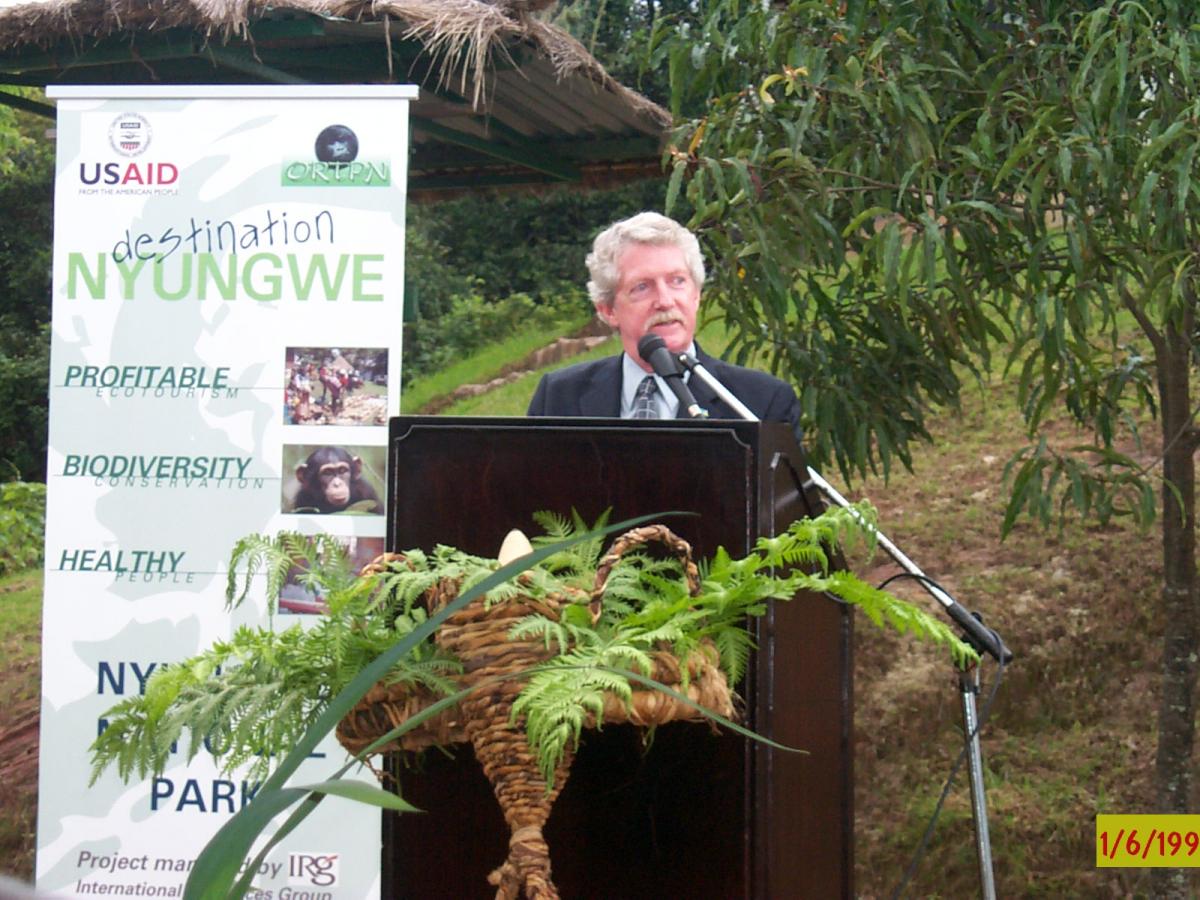
Dennis Weller, USAID Mission Director, speaking at the Nyungwe Nziza ceremony.
Archives of USAID Rwanda.
Boosting Tourism and Community Engagement
From 2006 to 2015, USAID initiatives like the "Destination Nyungwe" and "Nyungwe Nziza Projects" significantly enhanced park infrastructure. These projects helped improve visitor centers and trails, and facilitated unique attractions like chimpanzee habituation, and the construction of the Uwinka Visitor Center, which further elevated Nyungwe's profile as a prime tourist destination. By improving the existing facilities, adding new attractions and new activities designed to better showcase the Park, the opportunities to keep visitors engaged and generate revenue expanded significantly. Just a year after the inauguration of the Canopy Walk,, the number of visitors to Nyungwe National Park increased by almost 44 percent (from 5,755 visitors in 2010 to 8,274 visitors in 2011). Nyungwe National Park was named one of National Geographic Traveler’s must-see places of 2014.
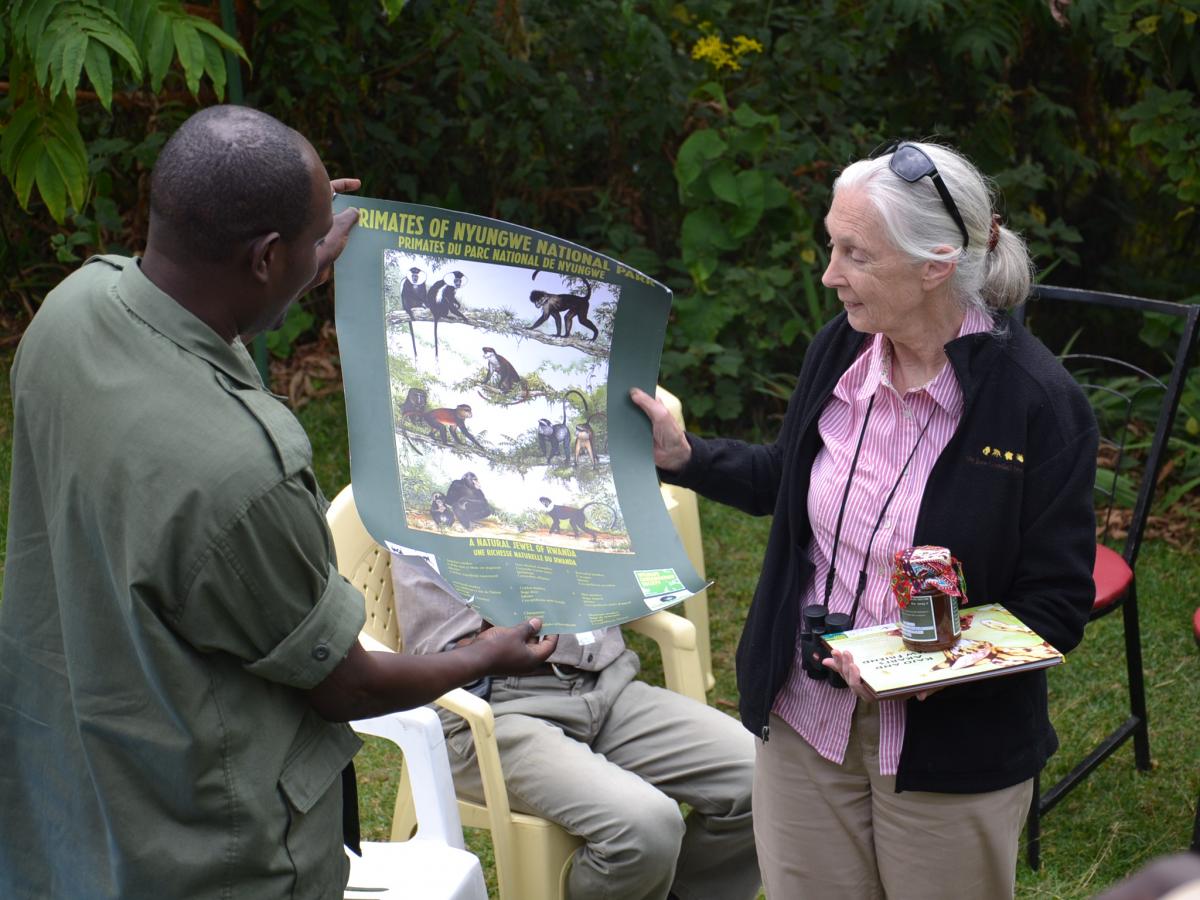
Jane Goodall visiting Nyungwe Park. May 2018.
Archives of USAID Rwanda.
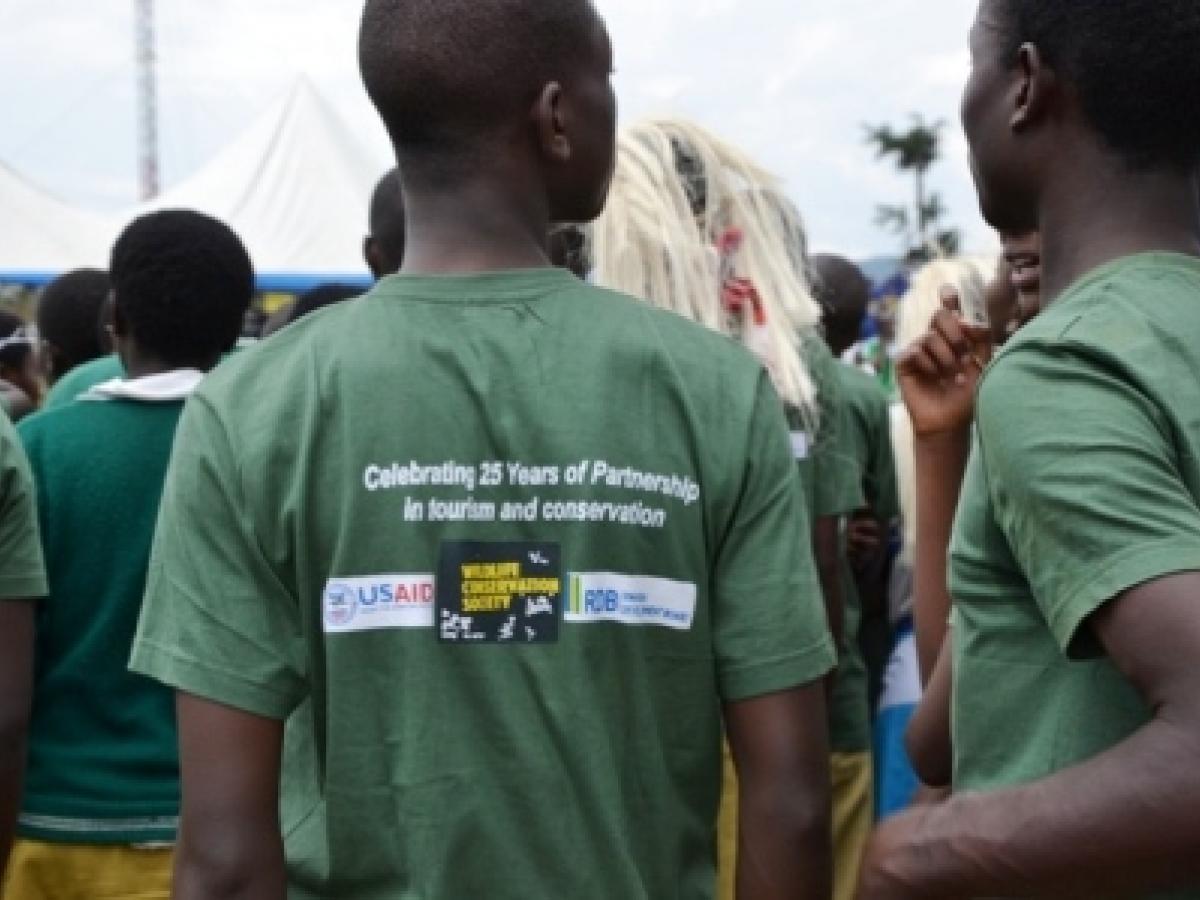
World Tourism Day celebrations at Nyungwe. 2013.
Archives of USAID Rwanda.
Community Conservation and Conflict Resolution
By 2013, the "Sustaining Biodiversity Conservation in Nyungwe National Park Project" saw a transition of the ranger-based monitoring system to the Rwanda Development Board (RDB), marking a critical shift towards long-term sustainability. This project not only addressed the decrease in wildlife due to poaching and habitat loss, but also reinforced community ties through training programs for local liaison agents who played essential roles in conflict resolution and conservation education. USAID worked with the local communities to help them start alternative income-generating activities and transition to eco-friendly cooking stoves.
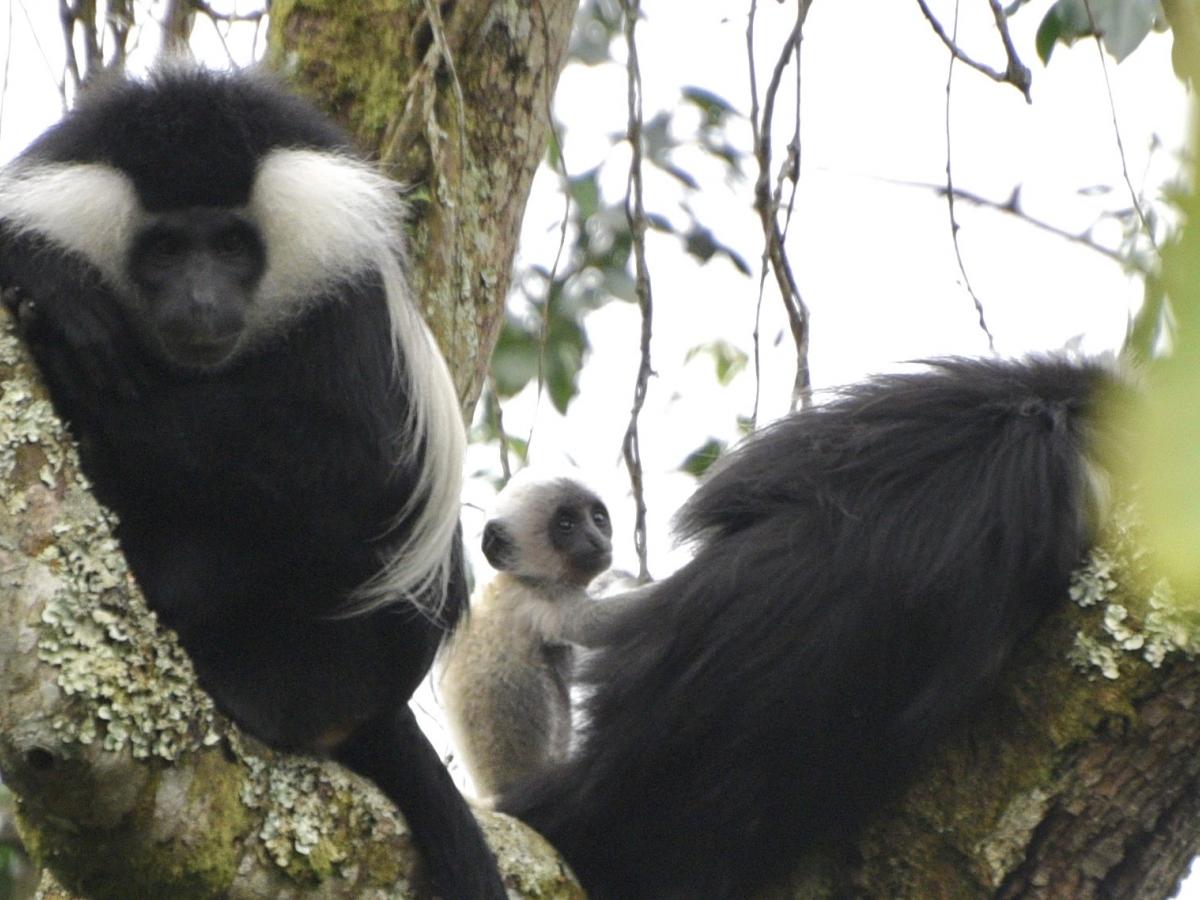
Colobus monkey family in Nyungwe, Rwanda.
Molly Steinbauer for USAID.
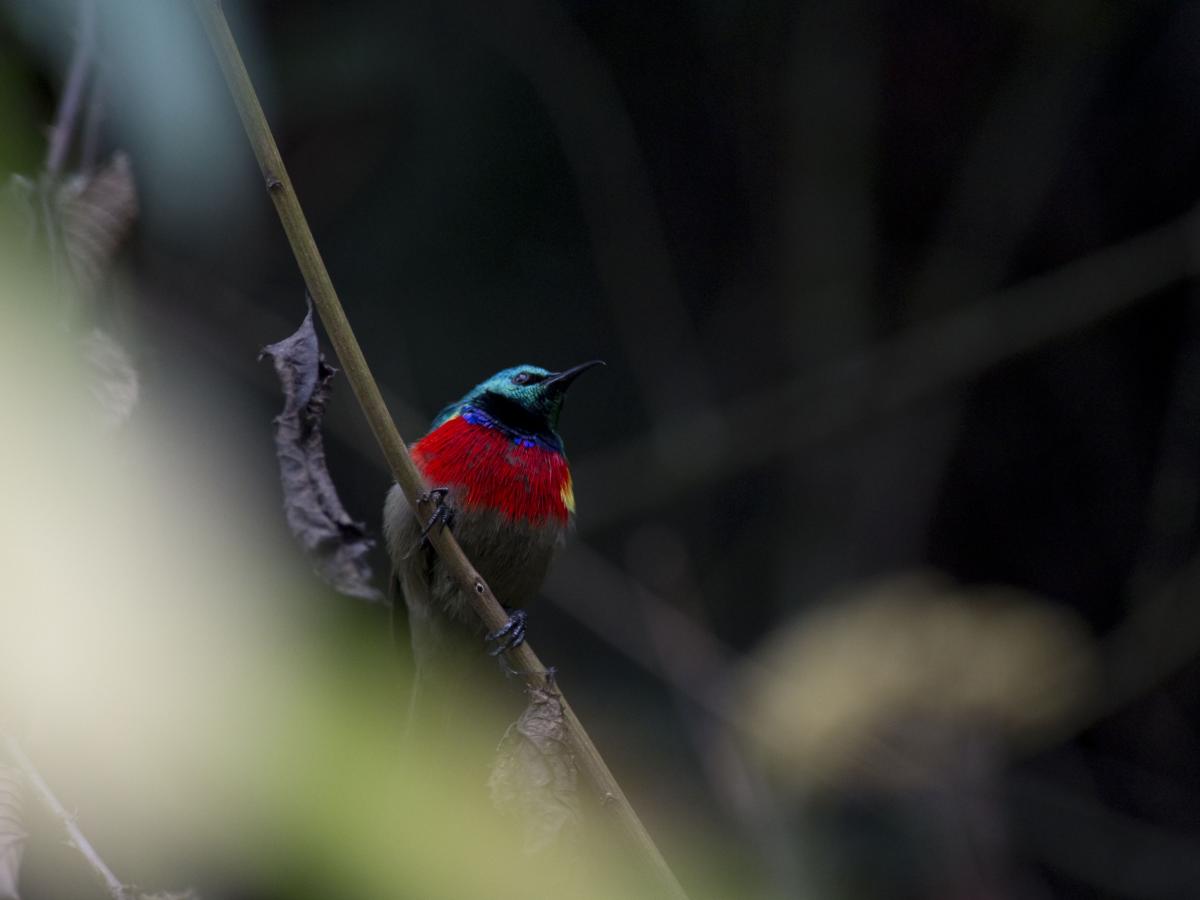
Double-collared sunbird.
Archives of USAID Rwanda.
A Model for Ecotourism: Volcanoes National Park
Parallel to the efforts in Nyungwe, USAID also supported the establishment of the Sabyinyo Community Lodge through the "Achieving Conservation and Economic Development Goals through Ecotourism Project" in Volcanoes National Park from 2006 to 2008. This initiative provided a sustainable income for local communities and set a benchmark for conservation tourism, combining luxury with ecological responsibility.
Volcanoes National Park (VNP) covers an area of 160 square kilometers and is part of a unique transboundary network of protected areas in Rwanda, Uganda, and the Democratic Republic of Congo. It was the first national park to be gazetted in Africa in 1925. Later, Dian Fossey made the area her home, where she researched mountain gorillas between 1967 and 1985. The VNP is an area of national and international importance, and supports globally significant wildlife populations, including one of only two remaining populations of the endangered mountain gorilla.
The gorilla population had decreased from between 400-500 in 1960 to just 242 individuals in 1980 due to poaching in the Virunga massif (shared between Rwanda, Uganda and DRC). The number rose to 480 in 2010 and 604 in 2016 due to conservation efforts by Karisoke Research Centre, Gorilla Doctors, GOR and other partners. Two-thirds of the 604 gorillas are located in Rwanda and grouped into 12 visitor-habituated families.

Baby Gorilla in the Volcanoes Park, Rwanda.
Molly Steinbauer for USAID.
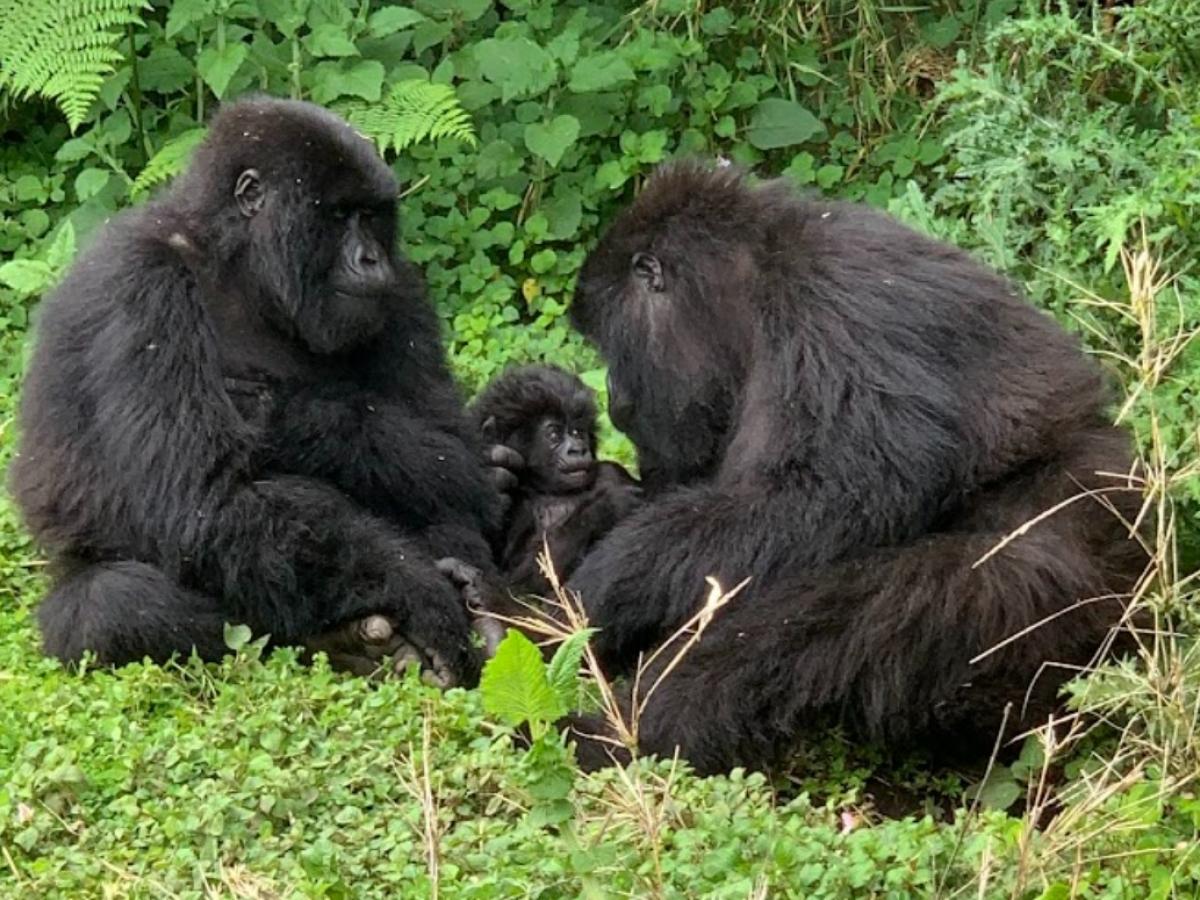
Gorilla family.
Molly Steinbauer for USAID.
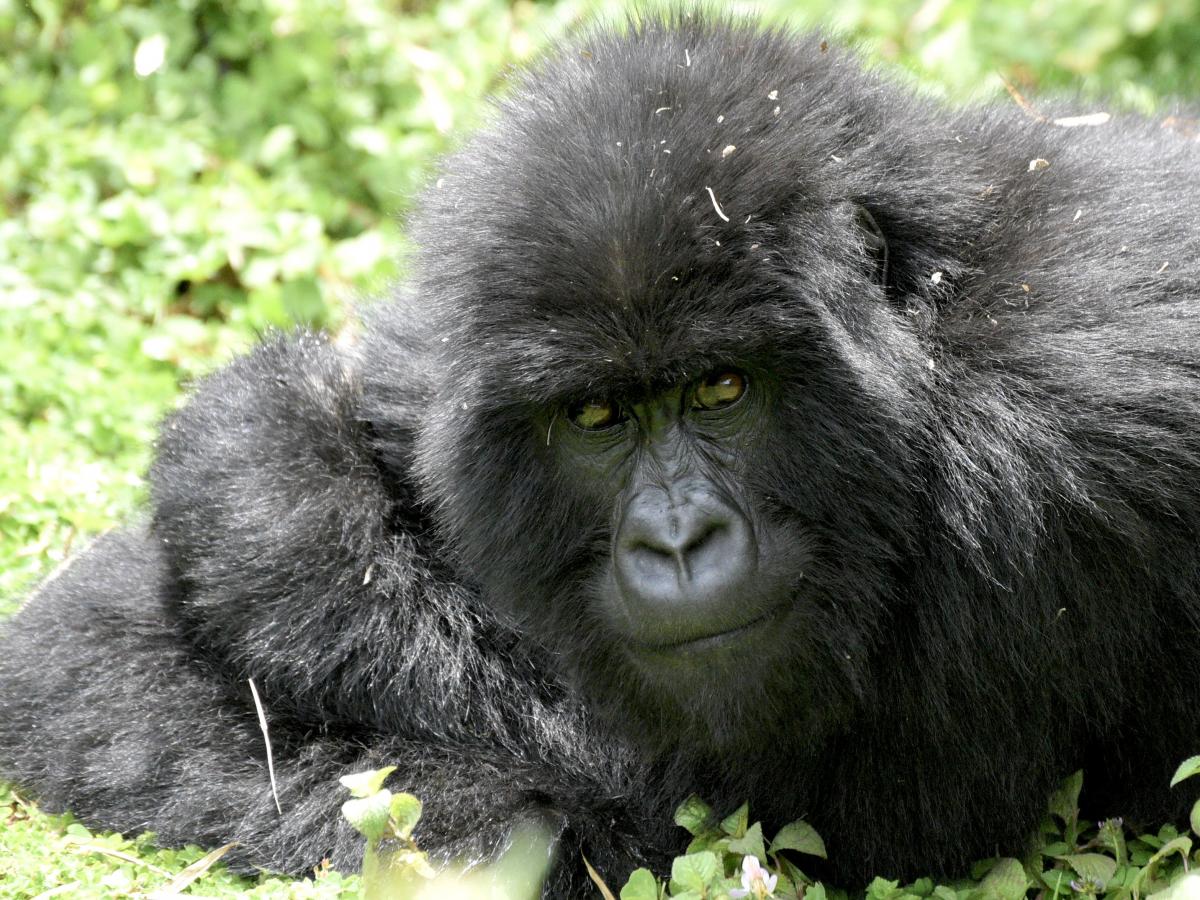
Gorilla in the Volcanoes Park, Rwanda.
Molly Steinbauer for USAID.
A Legacy of Impact
Over several decades, USAID has invested around $20 million into Rwanda’s biodiversity conservation, an investment that has paid dividends not just in conserved landscapes but also in robust community development and sustainable tourism practices. This profound impact ensures that Rwanda’s natural beauty will continue to thrive, supported by a foundation of local empowerment and international tourism.
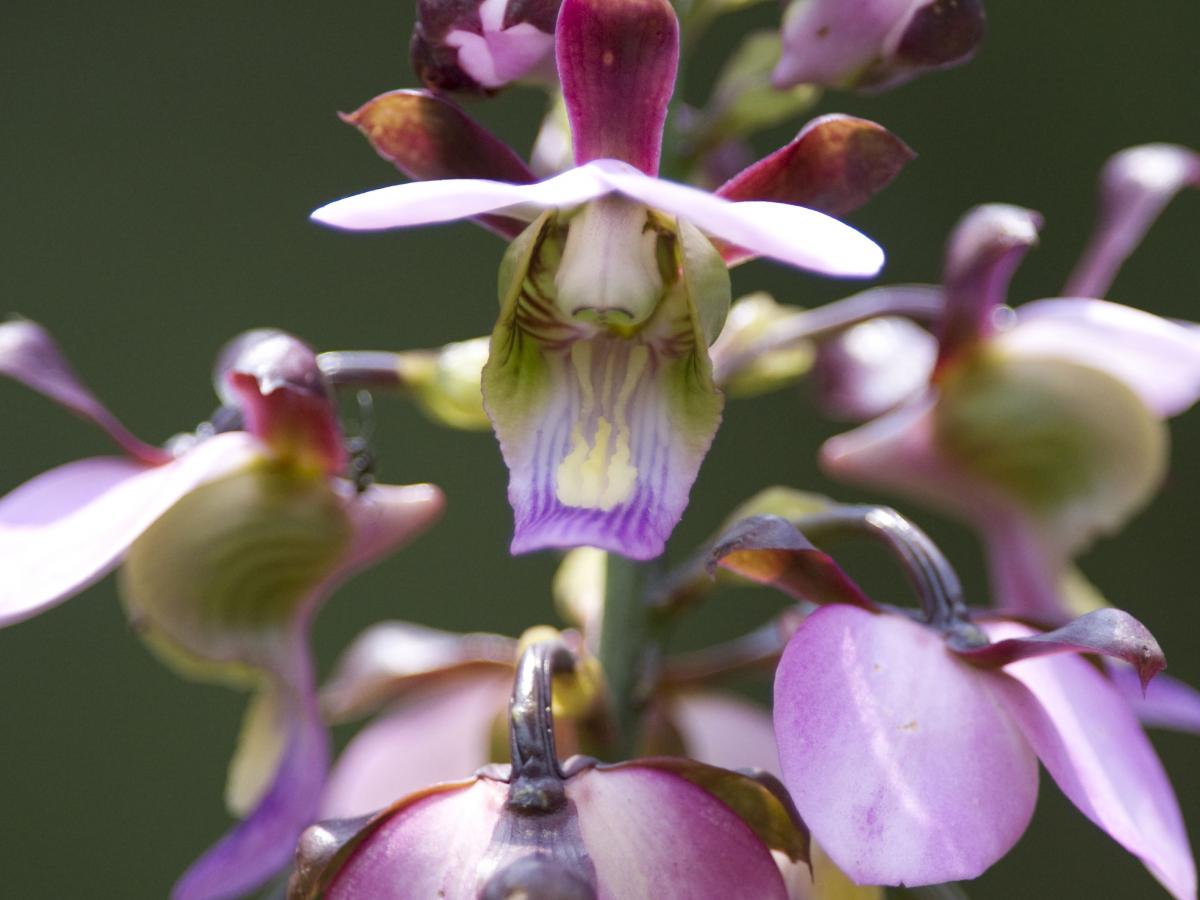
Eulophia horsfallii ( sometimes called Eulophia rosea) in Nyungwe, Rwanda.
Archives of USAID Rwanda.
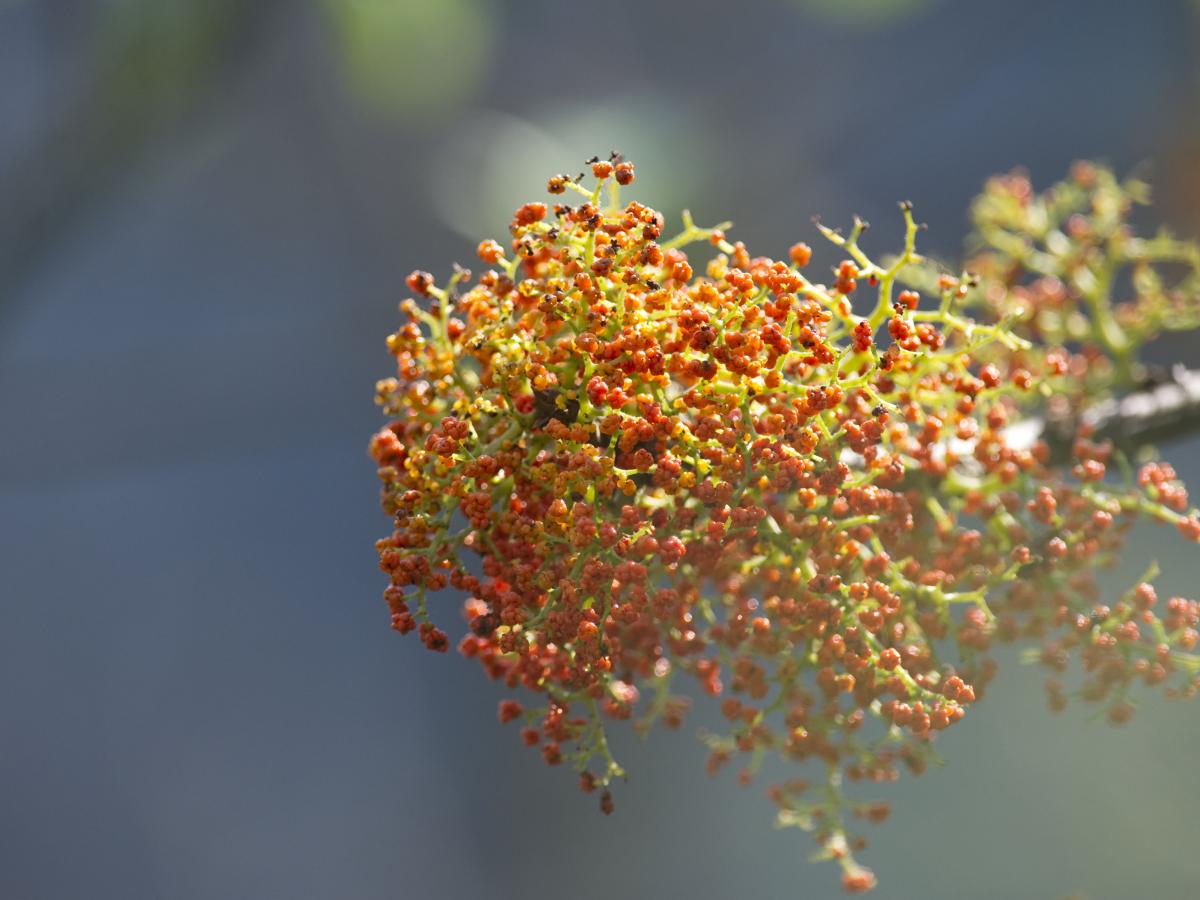
Urera in Nyungwe Park, Rwanda.
Archives of USAID Rwanda.
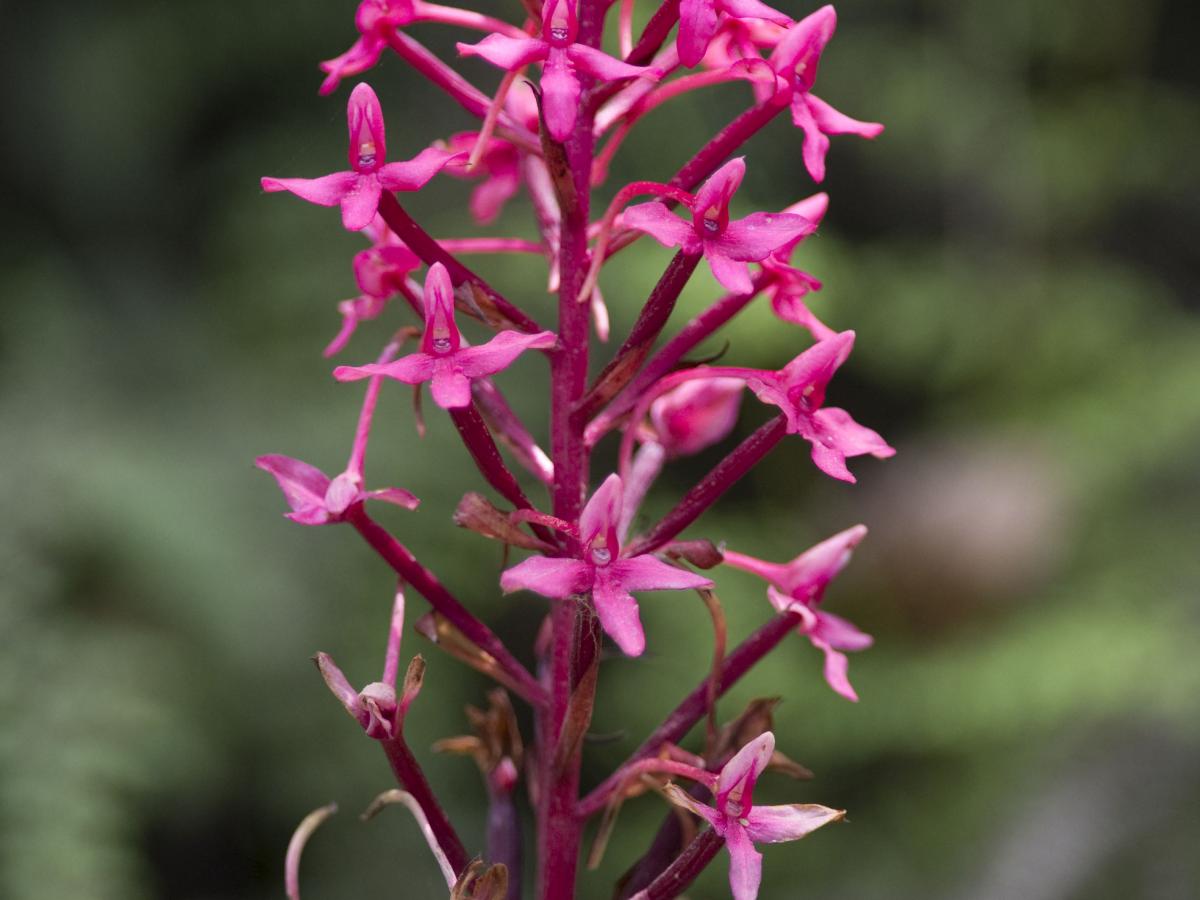
Disa eminii in Nyungwe, Rwanda.
Archives of USAID Rwanda.
To find out more about our work in climate and biodiversity protection, please see our Economic Growth page here, and get in touch with Jessica Torrens-Spence, our Director for Economic Growth, at gtorrens-spence@usaid.gov.

